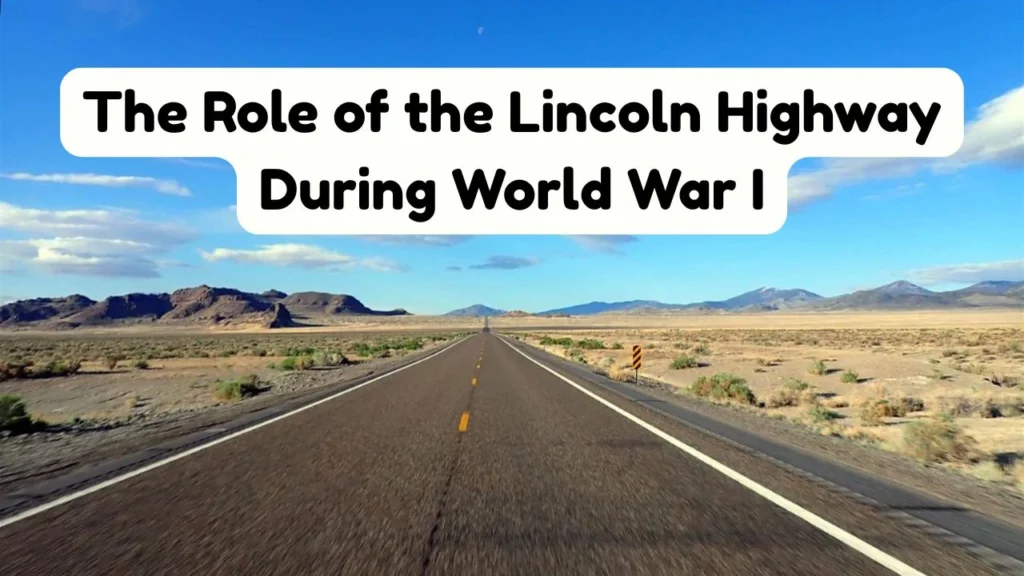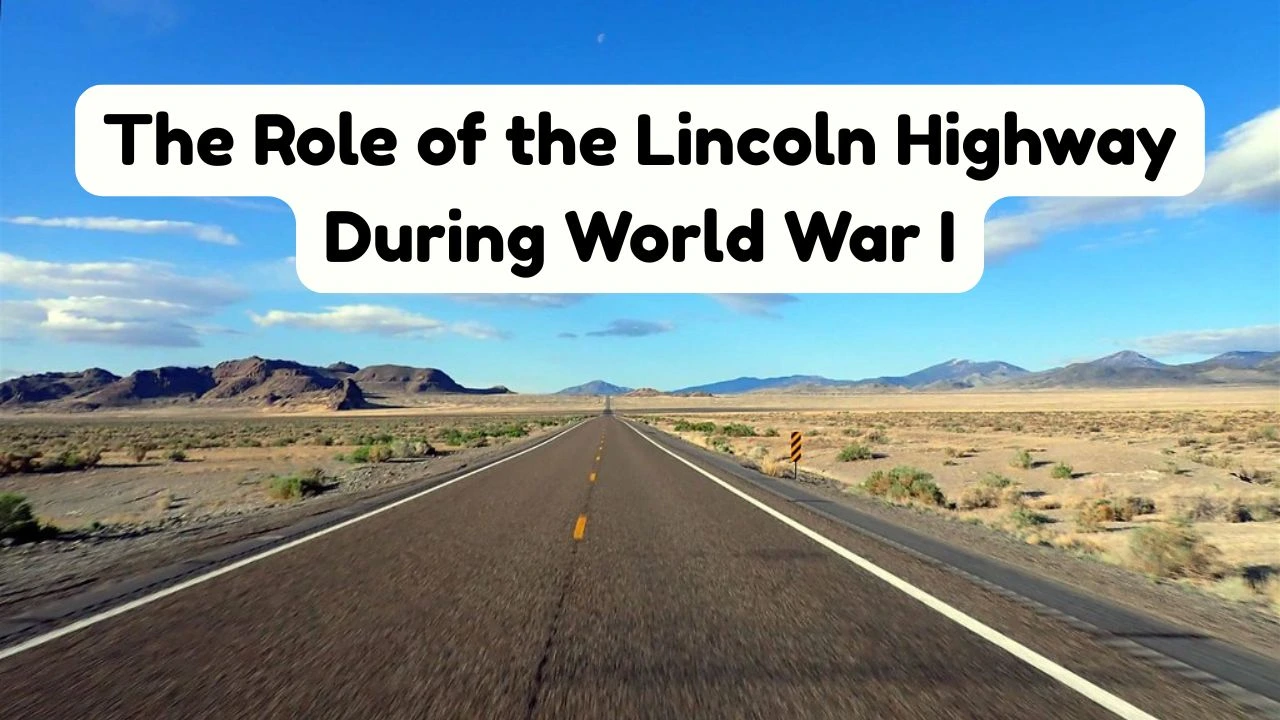During World War I, the Lincoln Highway the country’s first road played an important, albeit difficult, role. Its state demonstrated the need for improved infrastructure for military mobility, even though it was essentially a symbol of national prosperity and unity. The historic 1919 U.S. Army convoy, which travelled from Washington, D.C. to San Francisco via the Lincoln Highway, revealed the road’s shortcomings and ultimately impacted the creation of the Interstate Highway System. The Lincoln Highway was essential to the war effort during World War I because it made it easier for soldiers, supplies, and equipment to move throughout the nation. The highway demonstrated the strategic significance of a dependable transportation infrastructure and helped to mobilise the economy by connecting resources and industry. This article is framed to get information on the The Role of the Lincoln Highway During World War I.

The Role of the Lincoln Highway During World War I
The nation’s first road, the Lincoln Highway, performed a crucial, if challenging, role during World War I. It was mainly a symbol of national unity and prosperity, but its state also showed the need for better infrastructure for military movement. The Lincoln Highway’s deficiencies were exposed by the historic 1919 U.S. Army convoy, which journeyed from Washington, D.C., to San Francisco via the route and ultimately influenced the development of the Interstate Highway System. Because the Lincoln Highway facilitated the movement of troops, supplies, and equipment throughout the country, it was crucial to the war effort during World War I. The highway connected resources and industry, demonstrating the strategic importance of a reliable transportation infrastructure and contributing to economic mobilisation.
Lincoln Highway And World War I
Symbol of National Unity: When the Lincoln Highway was finished in 1913, it served as a symbol of both development and national unity by establishing the first car connection between the coastlines.
Evidence of Infrastructure Requirements: In order to evaluate the Lincoln Highway’s viability for military transportation and to promote improved roads, the U.S. Army organised a cross-country convoy over the route in 1919. Despite its goal, the convoy encountered several difficulties because of the bad state of the route, which included small passes, muddy sections, and shoddy bridges.
Impact on the Development of Highways: The 1919 convoy experience, in particular the challenges faced by the army trucks and equipment, brought to light the necessity of a nationwide network of better roadways for both military and civilian uses. The Federal Aid Road Act of 1916 and the Federal Aid Highway Act of 1921, which eventually resulted in the creation of the Interstate Highway System, were passed in large part because of this experience.
Influence on Eisenhower: Dwight D. Eisenhower, a young Lieutenant Colonel who went on to become President and support the Interstate Highway Act of 1956, led the 1919 convoy. Eisenhower’s idea for a contemporary, effective national highway system was greatly impacted by his experiences on the Lincoln Highway.
Indirect Effect on Home Market: Despite its drawbacks, the Lincoln Highway’s role in promoting trade and transportation helped the war effort indirectly by assisting with the flow of commodities and the home market.
How did the Lincoln Highway became useful during the World War I?
During World War I, the Lincoln Highway demonstrated its importance as a vital transit route and aided in the war effort.
1. Troop movement: Facilitated the movement of troops to ports and training camps.
2. Transportation of war supplies: Transported munitions, food, and other essential supplies.
3. Connecting industries: Linked industries and resources, supporting war production.
4. Strategic transportation route: Served as a vital transportation artery for military logistics.
5. Enhanced efficiency: Improved the efficiency of military transportation and supply chains.
6. Supporting war mobilization: Contributed to the mobilization of resources and personnel for the war effort.
7. Connecting East and West: Provided a direct route across the country, facilitating communication and transportation.
8. Military equipment transport: Transported military equipment, such as vehicles and artillery.
9. Supply chain management: Helped manage supply chains for the military, ensuring timely delivery of goods.
10. Infrastructure demonstration: Highlighted the importance of a reliable transportation infrastructure for national defence and economic growth.
FAQs on the Role of the Lincoln Highway During World War I
- What role did the Lincoln Highway play during World War I?
- The Lincoln Highway facilitated troop movements, transported war supplies, and connected industries to support the war effort.
- How did the Lincoln Highway contribute to the war effort?
- It served as a strategic transportation route, enhancing the efficiency of military logistics and supply chains.
- Why was the Lincoln Highway important during World War I?
- It played a crucial role in supporting national defense and economic mobilization by providing a reliable transportation route.
